By:
Sarreal D. Soquiño–CHI Incorporator
The need to promote the study of the Capisnon history and culture has now become an urgent task. The continued research and interpretation of our local history will lead us to understand fully well our past in a proper perspective, the Capisnon view. Thus, the founders and pioneering members of the Capiz Historical Institute or CHI have envisioned the organization as the “the center of research, education, training and publication, and prime advocate of Capisnon History and Culture.” This is the amended vision statement formulated and unanimously approved by the 1st General Assembly of the participants on June 5 & 6, 2009 at the Audio-Visual Conference Center (AVCC) in Filamer Christian College or FCC.
To pursue CHI vision statement, the following objectives have been adopted;
- a) Promotion of the Capisnon history & culture;
- b) conduct local historical, folkloric & ethnographic research and various forms of educational activities such as conference, seminar-workshops, dissemination of relevant publications; and
- c) collaborate with the local government units (LGUs) in the promotion of local tourism.
Its Beginning
The existence of CHI as an idea commenced when Virgilio S. Clavel [1] or Gil and I unexpectedly met on June 5, 2008 at the Paseo de Roxas[2] in Roxas City, a small commercial area between the historic Cathedral of the Archdiocese of Capiz and City Hall. I asked him about a certain fact that appeared in the paper authored by elder brother, Prof. Leothiny S. Clavel, appeared in Diliman Review in 1995. Our brief conversation ended with his proposal to form an organization, something like a historical society in the province (Capiz). He encouraged me to introduce the idea to my colleagues at Filamer Christian College or FCC particularly those who have been teaching History and Social Science courses. I took it seriously, and we both agreed to gather selected colleagues and friends for a brainstorming.
On July 16, 2008, Prof. Jorgen Gregorio, Alumni and Mass Media Coordinator of FCC, accommodated the small group we formed at his comfortable office that madethe brainstorming productive. Gregorio was part of the early group who entertained the formation of a local historical society. We all agreed with the idea that this organization we were conceiving must mainly focus on the pursuit of historical research andpublication dealing with the Capisnon studies. Interested individuals who actively took part in the discussion were Jorgen Gregorio, Gil Clavel, Nemie Boy from FCC High School department, Mrs. Katigbak from Capiz State University- Main Campus, and myself. We constituted the core group or secretariat during the next months of making plans for the realization of a conceived organization except Mrs. Katigbak who later left CAPSU for abroad.
As we wanted to preserve the momentum of organizing a local historical society which we already identified as Capiz Historical Institute (CHI) earlier, the core group decided to hold a secondmeeting next month, that was August 2, 2008 at the Board Room of President’s Office in FCC. Our agenda was to come up with a strategic action plan that could lead to the formulation of Vision & Mission statements, election of officers, drafting of the constitution and by-laws, registration at the Securities and Exchange Commission and Bureau of Internal Revenue, and Local Government Unit or LGU accreditation, among others.
The second meeting in August 2 was materialized. Gregorio, Gil Clavel, Boy and myself as the core group were present. Mr Romeo Arceño, a septuagenarian journalist and known local historian of Capiz, also came, and gave us several backed issues of a regional newspaper, Daily Informer, that published his articles – mostly historical – that are related to Capiz experience. He also told us stories of historical value dealing with his personal experiences about the 2nd World War in Capiz. Our interaction withhim provided us different perspective about the War. Selected copies of his published historical articles are presently in my possession as we intend to collect and preserve materials that can be useful for historical research.
On the 10thof September, the secretariat had again met at the Graduate School Conference Room in FCC at around two (2) in the afternoon. New faces came to the meeting, as a result of our for invitation, who appeared interested on the prospect of forming an organization we envisaged. Among those who attended the September 10 meeting were Gerry T. Pagharion[3] (editor of CapizTimes), Ramon Atinon (also form Capiz Times), Jubert Lago who is connected with the local government unit of Tapaz, Alger Inocencio and Romeo Arceño who belonged to the press bureau of Roxas City government, Danilo Pamplona and Xielwin Obsiana from FCC. Jorgen presided the meeting. I took down notes as discussion became animated. Unfortunately, Gil did not come because he was prevented by his work. After the discussion, the group came up with the following objectives:
- Promotion of local history and culture;
- Conduct historical research(putting historical facts in their proper perspectives);
- Organize all available materials and deposit them to school libraries or museums;
- Coordinate with the different LGUs and media institutions in Capiz on matters concerning history & culture;
- Conduct an inventory of all historical personalities, sites and landmarks;
- Identify the primary sources of Capiz history; and
- Publish a yearly Capiz historical journal.
Pagharion suggested that the secretariat or core group must remain operational and should focus on the formulation of the Vision and Mission statements of the organization. The secretariat was asked by the body to present the matter next meeting in which the date was not specified. The secretariat was given enough time to formulate the Vision & Mission statements before it would present it to the body who made up the September 10 meeting.
1st Seminar-Workshop: A Big Leap
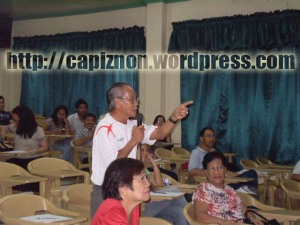
Mr. Benny Cortez discussing about roots of Sen. Jose Altavas and Pres. Manuel Roxas political rivalry.
The plan to hold a 2-day seminar-workshop sponsored by the CHI, andin cooperation with the FCC, was a surprised to me. This was hatched mainly by Gil, Jorgen and Nemie. I was not directly part of the planning stage because I was officially appointed by the chairperson Social Science division of FCC, Mrs. Gilda Gimoto[4] to temporarily take her function during the enrolment period for the incoming first semester of academic year, 2009-2010. The responsibility I assumed from Gimoto’s absence kept me away from Gil and Jorgenwho were doing the “dirty” work. That was the last few weeks of month of May; the planning stage of the seminar-workshop. However, I was well aware of the plan as Jorgen updated me regularly. The invited lecturer was Prof. Leothiny S. Clavel[5]. He is Gil’s elder brother. The administration of FCC headed by Dr. Expedito Señeres as college president gave full support to the activity by allowing us to use the air-conditioned and well-equipped audio-visual conference center as our venue. Prof. Clavel gave series of lecturers on the various approaches of qualitative research like historical, folkloric and ethnographic method.
There were 42 participants excluding the members of the secretariat in the seminar-workshop who came from different schools, local government units, government agencies, andone from the media. The second day (June 6) of the seminar-workshop was equally interesting. The secretariat decided to transform the participants into a plenary or assembly to take part into the formulation of the Vision and Mission Statements, election of members of Board of Trustees (BOT), and the adoption of the official name of the organization. The majority voted for, Capiz Historical Institute. The elected BOT members and officers are:
Jorgen Gregorio – President
Ruel Doce – Vice President for External Affairs
Alger Inocencio – VP for CHI Programs/Projects
Olive Joy Abing – Secretary
Ella Aurelio – Assistant Secretary
Salvador Ochavo – Treasurer
Amy Almosa – PRO
Susan Fantilanan – Auditor
Rolly Miguel – Business Manager
Thereafter, Prof. Clavelresumed the remaining activities of the seminar in the afternoon. The whole assembly was divided into three groups for a workshop to discuss certain guide questions the lecturer had provided for them to answer. The results of the workshop were presented to the plenary for further deliberation which later turned over to the CHI secretariat for research purposes in the near future.
The vision and purpose of CHI have been conceived by a handful of interested individuals who are all Capisnons. They are Virgilio Clavel, Jorgen Gregorio, Nemie Boy, andmyself. We constituted the core group or secretariat while the CHI was still an idea. The immediate election of officers demonstrated the deepest belief upholds by the secretariat that the CHI project, in general, is everyone’s venture; it is fundamentally Capisnon’s. Its beginning was hatched by the secretariat from June 5, 2008 to September 10, 2008. It has reached its final form as an organization last June 6 (2009) during the second day of the first seminar-workshop it organized at Filamer Christian College.
Notes
–——————–
[1] My early acquaintance w/ Mr. Clavel or Gil was during the seminar-workshop on ‘Strategic Issues in Organizing and Governance at Colegio de la Purisima Concepcion, Roxas City on May 28-29, 2004.
[2] I was at the Paseo de Roxas for the reproduction of some selected materials I borrowed from Panublion Museum, Roxas City, Capiz.
[3] Pagharion wrote an article about the September 10 meeting in his column, “Eye Opener” in Capiz Times, entitled, “Capiz Historical Institute: Initial Step to put history to its proper perspective.”
[4] Mrs. Gimoto participated in the June 5-6 (2009) 1st seminar-workshop sponsored by the CHI. As chairperson of Social Science Division of Filamer Christian College, she wrote an official letter to the College President of FCC informing him about the 1st seminar-workshop on Qualitative Research organized by the Capiz Historical Institute. Dr. E. Señeres, FCC President, released funds for the participation of around19 faculty members who are teaching social science subjects, both from the College and Basic Education departments, to the said activity.
[5] Prof. Clavel holds a BA (Journalism), an MA in Anthropolgy and a Ph.D (Philippine Studies) degrees from University of the Philippines in Diliman. He has taught Research Methods for more than 20 years at UP Diliman and UP Manila. He also served as faculty in some prestigious Philippine universities like Ateneo de Manila University, De La Salle University, University of Santo Tomas and Philippine Normal University. He has been teaching, too, summer graduate courses in educaton at the Colegio de la Purisima Concepcion in Roxas City since 2001. Some of the Capiz papers he delivered in international conferences are “Capiz in 1900 and 2000: Political Parallels and Contrasts” (2000), and “The Drowning and Resurfacing of Panay in Central Philippines” (2008), which provides folkloric accounts of the origins of Olotayan and Sapatos Islands and Mantalinga and Tuwad islets in Capiz.
Capiznon Online talks about everything and anything you want to know about Capiz, its allure, its beauty, the latest issues being talked about, the happenings as well as the latest landmarks, recreational centers, watering holes and all the things that make Capiz truly captivating and bewitching.

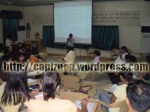

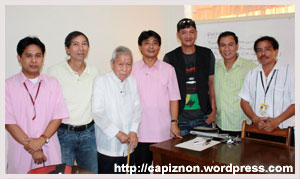

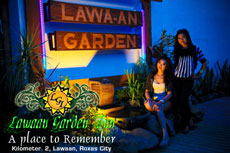



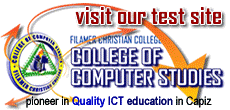




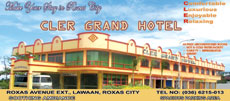





A very worthy initiative! I only with I could have been there for that seminar; was it open to the public, or by invitation only?
The seminar workshop was participated by different sectors in Roxas City and Capiz (DepEd, Colleges, LGU, NGO and Media). It is open to the public.
Organizers of Capiz Historical Institute sent invitations to all selected local schools(mostly tertiary) and LGUs.
This is fantastic news! Will this organisacion be able to help people like me (in Europe) trying to trace their ancestry from Capiz?
Thank you for the infos. This would be very helpful for those who are planning to travel especially in philippines.
hmffff,,,, capiz has no historical spot?
Pingback: Capiz Historical Institute: Its Inception « CAPIZ, the EcoCultural Tourism Hub in Central Philippines
Reply to Isabel comment dated February 22, 2010
Definitely! A person who does not know his past is bound to repeat the same mistakes. He/she that has no sense of local history is like a person without a soul. It is not ancestry alone that, in my opinion, is important to rediscover your past through the CHI. Your Capisnon history will inform you of the real heroes, the decent people and authentic leaders that we can be proud of. Lots of historical inaccuracies, gaps and fissures remain to be excavated toward a rewriting of our history. Your ancestry and friends there in Europe may have some historical ideas, episodal accounts that may help us. Besides, the CHI is in dire need of funds for rewriting an authoritative history of Capiz. Maybe, Capisnons there can help CHI… Hehehe.